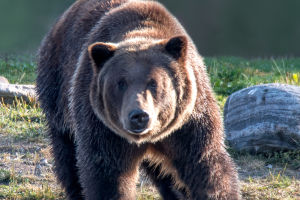The Bald Eagle, also known as Haliaeetus leucocephalus, is a magnificent bird of prey that is found in North America.
It is the national bird and emblem of the United States of America and is widely recognized as a symbol of freedom and strength.
With its striking appearance and impressive wingspan, the Bald Eagle is one of the most iconic birds in the world and has played an important role in American culture and history.
The Bald Eagle is easily recognized by its white head and tail, dark brown body, and yellow beak and eyes. Adult Bald Eagles typically measure between 28 and 40 inches in length and have a wingspan of 6 to 7 feet.
They are powerful fliers and can soar for hours without flapping their wings. Bald Eagles are also known for their sharp talons, which they use to catch and hold onto their prey.
Bald Eagles, iconic birds of North America, are distributed widely across the continent, from the cold landscapes of Alaska to the warm climates of Florida. Their presence is usually noted near various bodies of water—rivers, lakes, and coastal areas—where they find abundant opportunities to hunt for fish and other aquatic creatures.
In addition to fish, Bald Eagles have a diverse diet that includes small mammals, birds, and reptiles, showcasing their opportunistic hunting behavior. They are also known to scavenge for food, taking advantage of carcasses and leftovers by other predators.
One of the most remarkable aspects of the Bald Eagle is its longevity. These majestic birds can live up to 30 years in the wild, with their lifespan extending even further in captivity. They exhibit strong fidelity to their partners, with a majority mating for life. This loyalty extends to their nesting habits, as they often return to the same nest each year.
Bald Eagle nests, known for their impressive size, are constructed high in trees or on cliffs to provide safety and a vantage point. These nests are not only reused but also added to each year, resulting in structures that can grow significantly over time, reflecting the bird's long-term commitment to its habitat and family.
The Bald Eagle was once on the brink of extinction due to hunting, habitat destruction, and the use of pesticides such as DDT.
In 1963, the Bald Eagle was declared an endangered species in the United States, and extensive conservation efforts were undertaken to protect it. Thanks to these efforts, the Bald Eagle has made a remarkable recovery and was removed from the endangered species list in 2007. Today, there are estimated to be over 70,000 Bald Eagles in North America.
In addition to its importance as a national symbol, the Bald Eagle plays an important ecological role as a top predator.
As a keystone species, the Bald Eagle helps to maintain the balance of ecosystems by regulating the populations of other species. It is also a popular subject for wildlife photography and has become a major tourist attraction in many parts of North America.
In conclusion, the Bald Eagle is a fascinating and majestic bird that holds a special place in American culture and history. Its iconic appearance, impressive size, and powerful presence have captured the imagination of people around the world.
The Bald Eagle’s recovery from the brink of extinction is a testament to the importance of conservation efforts, and its ongoing presence in the wild is a reminder of the beauty and resilience of the natural world.


